JMS-Q1600GC UltraQuad™ SQ-Zeta
Gas Chromatograph Quadrupole
Mass Spectrometer
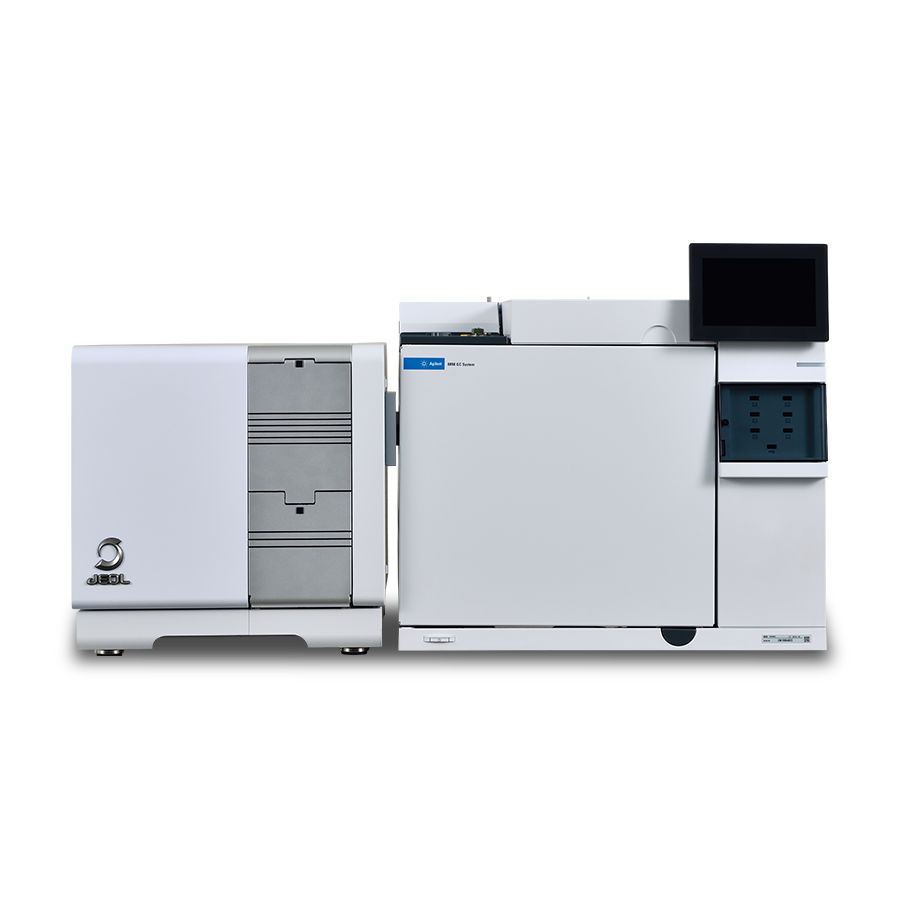
"Zeta"
The 6th generation high-end GC-QMS is finally here!
The new JMS-Q1600GC UltraQuad™ SQ-Zeta of JEOL is our 6th generation high-end Gas Chromatograph Quadrupole Mass Spectrometer (GC-QMS) based on JEOL's 50 years of MS technologies and experience.
From quantitative applications such as environmental samples, water quality control and agrochemicals, to qualitative applications such as materials and aroma analyses, the SQ-Zeta is the ultimate general-purpose GC-MS with high-performance capabilities for a wide variety of measurement and analysis needs.
Features
High sensitivity and Excellent dynamic range
IDL < 5 fg
Eight sequential measurements of 20 fg of octafluoronaphthalene (OFN) were performed by using the standard EI ion source.
The instrument detection limit (IDL) is calculated based on the peak area and reproducibility of the extracted ion chromatogram for the molecular ion. An IDL of 2.6 fg was achieved for the system.
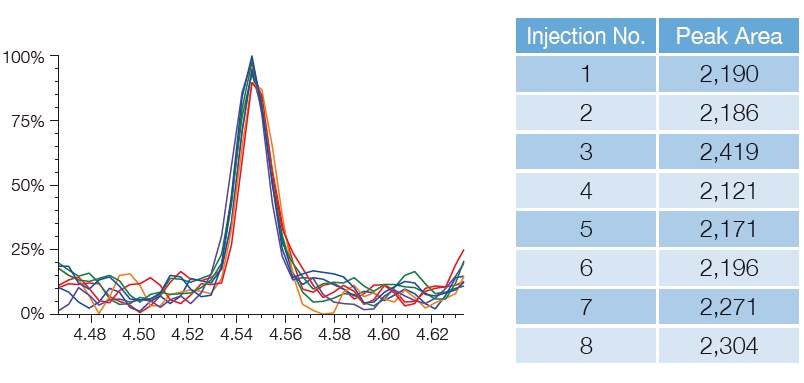
Wide dynamic range
OFN at concentrations ranging from 0.005 to 1,000 pg / uL were measured by using SIM mode with the standard EI ion source. A calibration curve with good linearity was obtained with a coefficient of determination of 0.999 or better. A wide dynamic range of more than 5 orders of magnitude is useful not only for quantitative analysis, but also for qualitative analysis of complex mixtures with different concentrations.
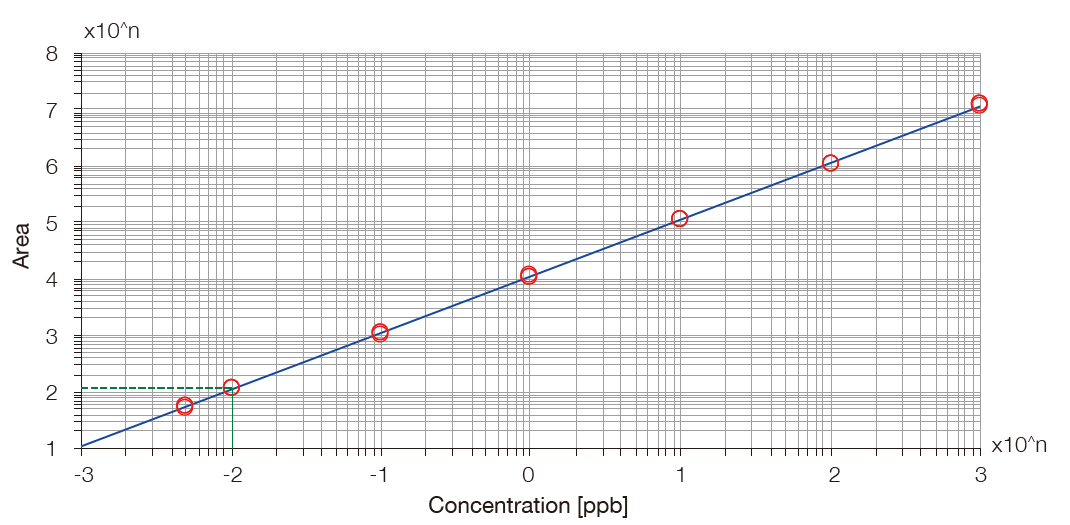
Two unique EI ion sources
Expanded analytical solutions!
Enhanced Performance Ion Source (EPIS, option) : IDL < 1 fg
The EPIS offers the highest in-class sensitivity in the industry with an instrument detection limit of < 1 fg (OFN 5 fg, eight measurements). As a result, the EPIS offers a variety of benefits that include:
Trace-level quantitative analysis
Simplification of sample concentration analysis, reduction of sample introduction volume (contamination reduction)
Replacement of quantitative measurement method from SIM to SCAN (simplification of measurement condition, non-target analysis possible).
The EPIS can be utilized not only for quantitative analysis but also qualitative analysis.
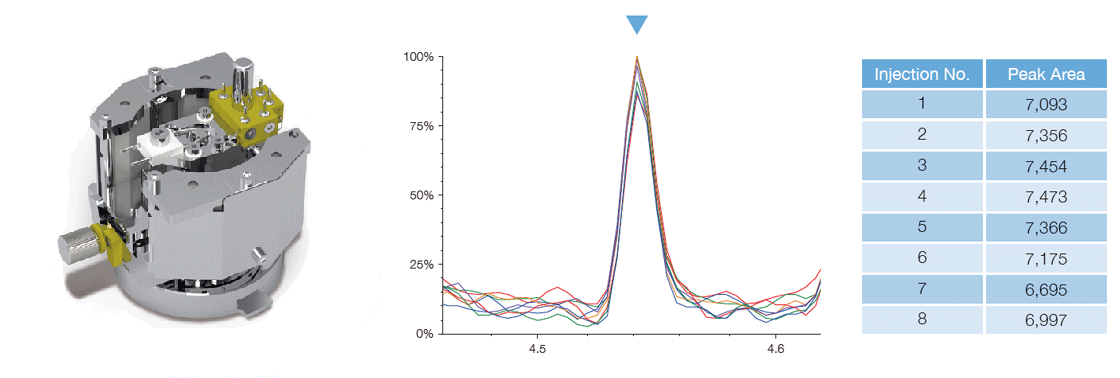
Eight sequential measurements of 5 fg of octafluoronaphthalene (OFN) were performed by using the EPIS ion source.
The instrument detection limit (IDL) is calculated based on the peak area and reproducibility of the extracted ion chromatogram for the molecular ion. An IDL of 0.6 fg was achieved for the system.
Photoionization EI/PI Combination Ion Source (option)
Photoionization (PI) is a soft ionization method that uses a vacuum ultraviolet (VUV) lamp. The EI/PI combination ion source allows both EI (Hard ionization) and PI (Soft ionization) without removing the ion source. All that is required for switching between EI and PI is to turn OFF the EI filament and turn ON the PI lamp or vice versa.
Features
No need to replace the ion source
No need to break vacuum
No need for reagent gases
Primarily for qualitative analysis
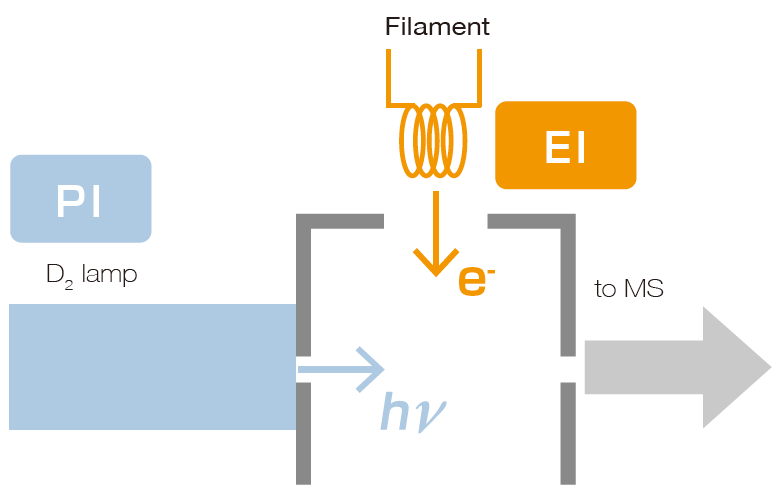
Schematic of EI/PI Combination Ion Source
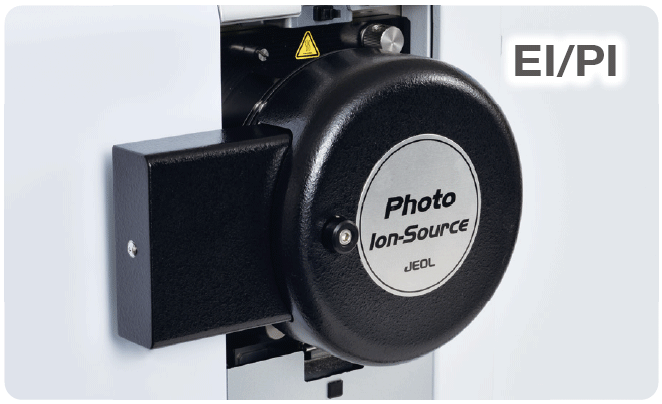
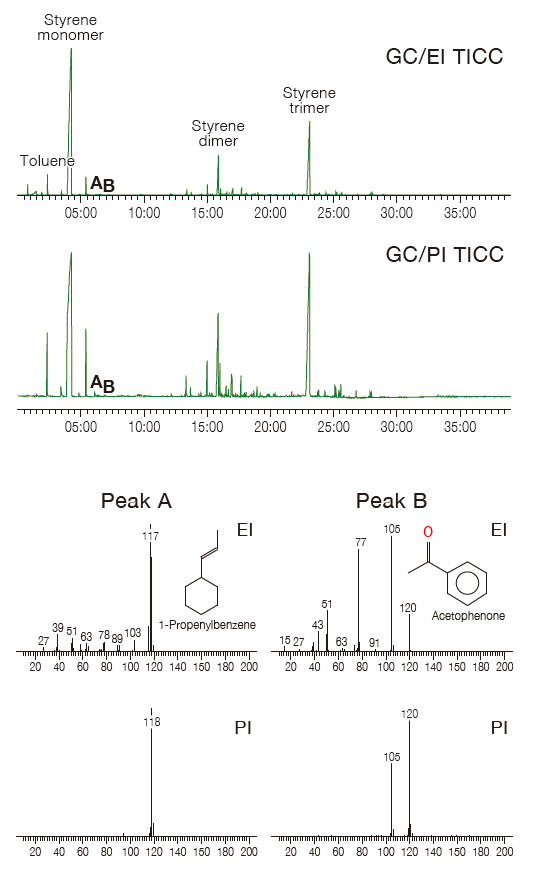
Py/GC-MS measurement result of polystyrene foam
Aromatic hydrocarbons, which strongly absorb UV light, are preferentially ionized by PI, resulting in high sensitivity detection of their molecular ions.
Full range of software
Integrated qualitative analysis software "msFineAnalysis iQ"
Break free from qualitative analysis based on library search alone!
A higher level of qualitative analysis is possible by combining EI and soft ionization data!
Based on our highly acclaimed msFineAnalysis software for GC-TOFMS, the new msFineAnalysis iQ expands this integrated qualitative analysis capability into GC-QMS data analysis.
This software automatically combines the library search results from the EI data with molecular ion information from the soft ionization data, and then reports the results in a color coded table. This combination of EI and soft ionization results in improved accuracy for identifying unknowns when compared to relying on library database searches alone.
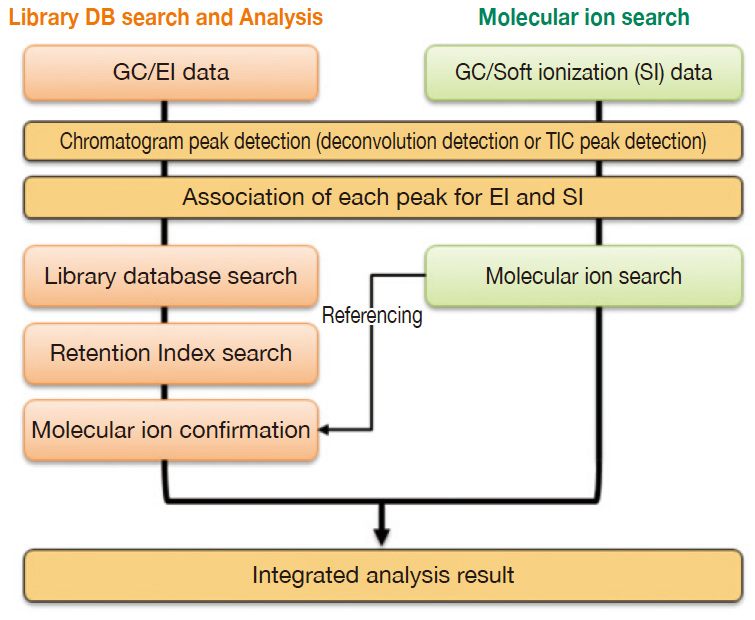
Work Flow of Integrated Analysis
msFineAnalysis iQ automatically performs the following steps.
1. Peak detection (deconvolution peak or TIC peak detection)
2. Link of EI and SI data (link)
3. Library search (EI)
4. Molecular ion search (SI)
5. Libray search result (EI, SI integration)
6. Integrated analysis result
Using EI and SI in combination with msFineAnalysis iQ provides a higher level of qualitative analysis results than relying on database searches alone.
※ msFineAnalysis iQ is optional software
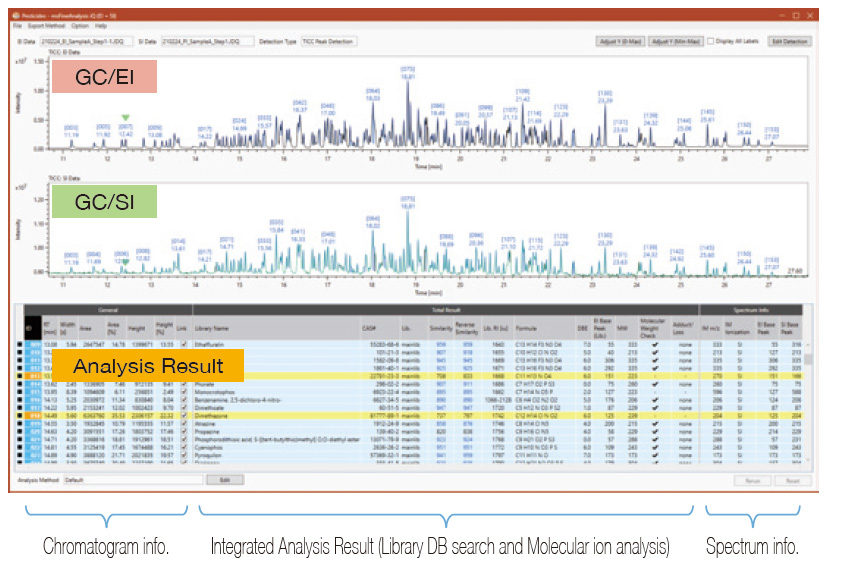
Integrated Analysis Result Window
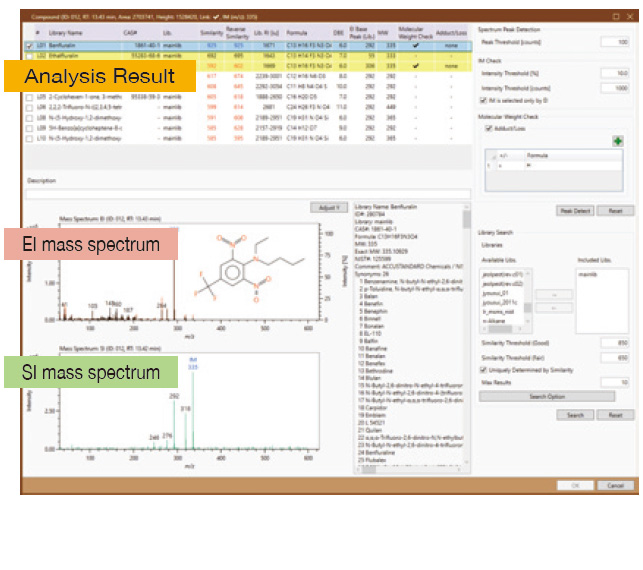
Individual Analysis Window
Catalogue Download
JMS-Q1600GC UltraQuad™ SQ-Zeta Gas Chromatograph Quadrupole Mass Spectrometer
Related Products
Related Products

JMS-T2000GC AccuTOF™ GC-Alpha 2.0 Gas Chromatograph - Time-of-Flight Mass Spectrometer
AccuTOF™ GC-Alpha 2.0
The ultimate GC-MS system that pursues the ultimate in performance and functionality, the JMS-T2000GC AccuTOF™ GC-Alpha, has evolved into version “2.0” with the integration of a fully automated standard sample inlet and msFineAnalysis AI.Click the "replay" button in the box above, and the movie will start (for 4 minutes).
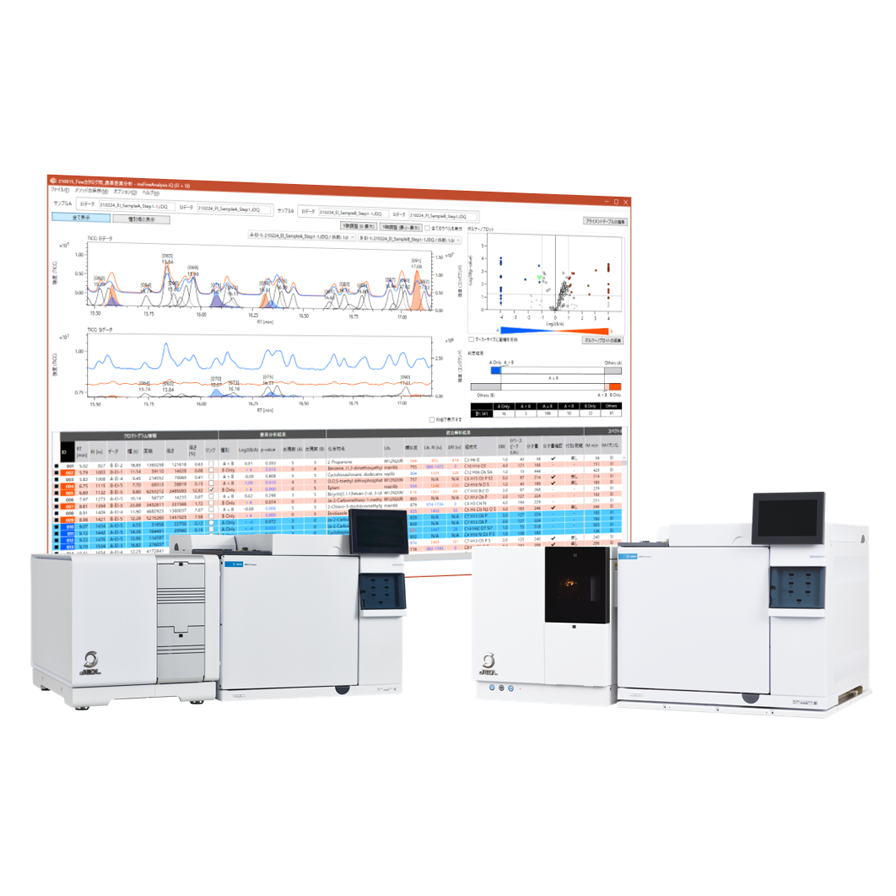
msFineAnalysis series GC-MS integrated qualitative analysis software
You no longer have to only rely on library DB searches for qualitative analysis! msFineAnalysis series
The msFineAnalysis series is an automatic qualitative analysis software that enables "integrated analysis" by combining the library database (DB) search using EI data and molecular weight confirmation using soft ionization data.
"  msFineAnalysis iQ" is designed for low resolution integer mass data analysis, and "
msFineAnalysis iQ" is designed for low resolution integer mass data analysis, and "  msFineAnalysis" is designed for high resolution exact mass data analysis. Each package improves analysis accuracy, shortens work hours, and improves work efficiency.
msFineAnalysis" is designed for high resolution exact mass data analysis. Each package improves analysis accuracy, shortens work hours, and improves work efficiency.
More Info
Are you a medical professional or personnel engaged in medical care?
No
Please be reminded that these pages are not intended to provide the general public with information about the products.
